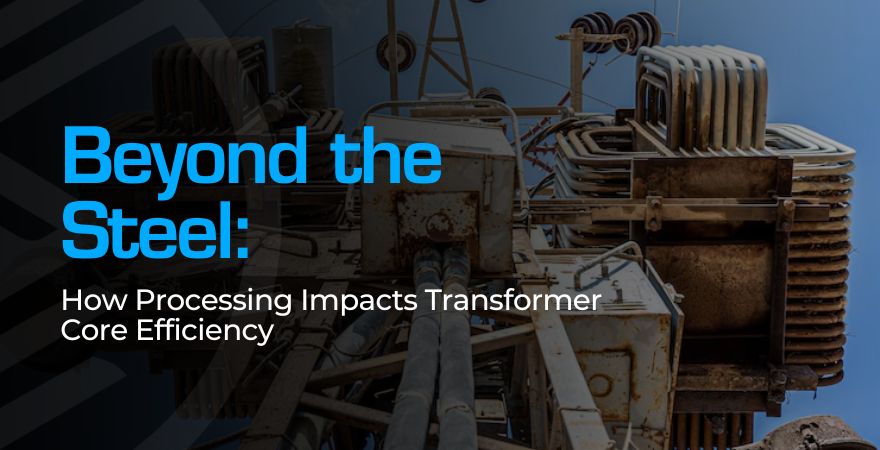When people talk about transformers, the conversation often revolves around the material used in the core, specifically CRGO steel. And yes, choosing the right steel is important. But here’s something most people don’t talk about: even the best steel won’t perform well if it’s not processed the right way. That’s where the real difference is made.
At Sarjani Coretech, we work with CRGO steel every day. But more importantly, we pay attention to how it’s handled from the moment it arrives at our facility to the final product that reaches you. That careful process is what helps transformer core run efficiently, last longer and avoid unnecessary problems down the road.
So, What Do We Mean by “Processing”?
Let’s break it down. After the CRGO steel comes in large coils, it goes through several steps before it becomes part of a transformer core. These steps include cutting the steel into narrow strips (slitting), shaping it into the right form (like rectangular or mitred laminations), and stacking those pieces together.
Each of these steps may seem small on its own but together, they play a big role in how well a transformer performs.
Where It Can Go Wrong (and How We Make It Right)
1. Cutting Matters
If the steel isn’t cut accurately, it can cause tiny gaps in the core. These gaps might not be visible to the eye, but they allow energy to escape. Over time, this can mean more heat, more electricity wasted, and a shorter life for the transformer.
At Sarjani, we take extra care to cut each strip of steel evenly and cleanly. This helps ensure the core fits together perfectly, like the pieces of a puzzle.
2. Sharp Edges Can Be Trouble
When steel is cut, it can leave behind sharp edges, or tiny metal burrs. These might seem harmless, but they can damage the insulation and increase heat inside the transformer. That’s why we use machines that leave smooth, safe edges reducing the chances of future problems.
3. Choosing the Right Shape
We offer both rectangular and mitred laminations. Rectangular ones are common and easy to assemble, while mitred laminations have angled joints that can reduce energy loss. Depending on what kind of transformer you’re building, we help you choose the right option to meet your needs.
4. Stacking It Right
Imagine building a wall with uneven bricks. It won’t stand for long. The same applies to transformer cores. If the steel layers aren’t stacked properly, it can lead to overheating and loss of performance. That’s why we make sure each layer is aligned properly, one on top of the other, to keep things running smoothly.
What Makes Sarjani Coretech Different?
We don’t just sell CRGO coils or Transformer Core laminations. We make sure every product we deliver is handled with care, checked thoroughly, and made to help your transformer do its job better and for longer.
Whether you need:
- CRGO Mother Coils
- Slit Coils
- Mitred or Rectangular Laminations
- Core Frame Assemblies
We’ve got you covered not just with material, but with the experience and attention that helps avoid problems later.
Why It Matters?
When a transformer runs efficiently, it saves electricity, reduces heat, and lasts longer. And that all starts with how the core is made. By working with a team that pays attention to the details, you avoid unexpected maintenance costs and power losses and get peace of mind knowing the core of your transformer is solid.
So next time you think about CRGO steel, remember: It’s not just about the steel it’s about what’s done with it.
And at Sarjani Coretech, we make sure it’s done right.

